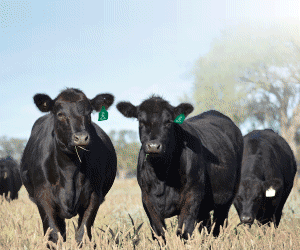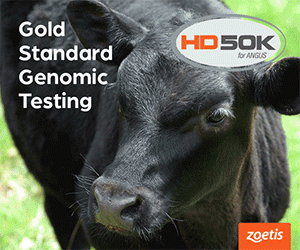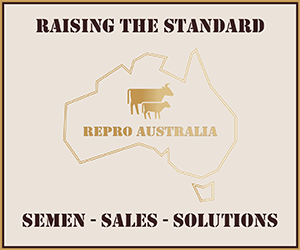One of the challenges facing beef producers across Australia is the ever increasing occurrence of drought. Drought presents many obstacles to the management of a beef enterprise with countless operational, financial and emotional hurdles testing the resolve of beef producers. While often not on the top of the priority list, one of the considerations that managers of a stud cattle operation need to make is the impact that the drought (and consequent management practices) has on both the genetics and performance recording requirements of their herd.
Who do I contact for advice?
The best approach to maintaining an effective performance recording program during a drought will vary from operation to operation and from drought to drought. If you are in any doubt as to the best strategy for your particular situation, please do not hesitate to contact staff at Angus Australia to discuss your options.
Genetic improvement is a medium to long term strategy for improving herd profitability. Importantly, the effects of genetic improvement are both cumulative and permanent. The breeding decisions made in a herd today will have a direct impact on the genetics and subsequent profitability of the herd for the next
ten years. Consequently, stud breeders are encouraged to persist with their long term genetic improvement strategy during short term challenges such as drought. One component of this is the maintenance of an effective performance recording program.
No. The performance of an animal will only be directly compared by the TransTasman Angus Cattle Evaluation (TACE) to the performance of other “similarly treated” animals. That is, calves that have been bred in the same herd,
are of the same sex, are of similar age and have been run together. It is how the animal performs relative to other “similarly treated” animals that is important, not the actual measurement of the animal.
Importantly, there are a number of strategies that can be taken which will minimise the disruption that drought has on the effectiveness of a herd’s performance recording:
- Breeders should carefully consider the traits that are important to their breeding program (or the breeding program of their clients) and potentially rationalise the traits that they record. With time often a constraint, limiting your performance recording to a core of important traits can be an adequate interim measure. Alternatively, maintaining the traits that you record but limiting your performance recording to just your bull calves may be a suitable short term option. If utilising this option, it is important to resume whole herd and full trait recording as soon as possible.
- Where possible, the number of animals within each contemporary group should be maximised and/or maintained. TACE will use the performance information of an animal more effectively if there are a large number of other “similarly treated” animals to compare it with.
- If a contemporary group has to be split for management reasons, create the new groups based on “automatic” criteria (eg. sex, age, prior management groups, prior weigh dates). In addition, try to weigh all calves in the contemporary group before the group is split.
- Care should be given to submitting accurate management group information. A different management group code should be entered for any calf or group of calves that have either been treated differently or exposed to different non-genetic influences. For example, calves given different levels of supplement or calves placed on agistment. Consideration should also be given to variations in pasture quality, stocking rates, water quality, etc. In addition, a birth management group should be specified with the birth performance (eg. birth weights) of any calves whose dams have been treated differently prior to calving.
In addition to the above management strategies, there are several specific considerations that need to be made when recording particular trait information.
- Only record scanning information on animals that are in adequate condition, especially when scanning for fat depth & IMF. To obtain effective results, animals should have a minimum average rump fat depth of 4 – 5 mm. This ensures that there will be sufficient variation between animals to allow genetic differences to show up.
- If early weaning, it is important to remember that TACE can only analyse the 200 day weights of calves that are older then 80 days of age when the weight is recorded. Consequently, if some calves will be younger than 80 days of age when you plan to wean, please contact staff at Angus Australia to discuss the performance recording options for these calves.
- TACE can analyse two 200 day weights on each animal. Therefore, if early weaning, it may be beneficial to weigh the calves at weaning and then take a later weight.
- In situations where the recording of the 200 day weights for your calves is delayed, it is important to remember that the recording of the associated mature cow weights should also be delayed so that they are taken within two weeks of the 200 day weights for the calves.
- The fertility performance of cows running under drought conditions can provide very valuable information to the TACE analysis. In drought situations, there will generally be more pressure placed on female fertility than normal and this can have benefits for genetic evaluation. However, the usefulness of the fertility information can decrease if there are significant non-genetic influences that can’t be accounted for (eg. disease). If you have any concerns over the quality of your fertility information in a drought, please contact staff at Angus Australia to discuss your concerns prior to submitting this information.
While the poor performance of animals is not a problem to genetic evaluation, there are countless factors that can potentially compromise the effectiveness of a herd’s performance recording during a drought. Generally speaking, these factors revolve around the forced implementation of management practices that cause considerable disruption to routine stud operations and/ or the poor condition of stock.
For example,
- Animals being placed on agistment, often on a number of properties, especially where the management of animals is largely uncontrolled/unknown
- Early weaning of calves or a number of different early weanings
- Increased and varied incidence of disease/sickness
- Dispersal of a large number of stud animals
Yes. Calves should be recorded even if they have lost weight. Remember that animals are only directly compared to other calves that have all been treated
alike. It is how the animal performs relative to the other “similarly treated” animals that is important, not the actual performance of the animal.
In extreme situations, if the drought has resulted in a high and varied incidence of disease/sickness, careful consideration needs to be given as to whether to record the performance for that particular group of animals. If there have been significant differences in non-genetic influences that can’t be accounted for, recording performance may bias the EBVs of these calves. It is important to note
that this relates not only to their performance during the drought, but all performance information for these calves. While the drought may have broken by the time their later performance is recorded, there may still be differences between the performance of the calves that can be attributed to the non-genetic influences that couldn’t be accounted for previously.
As a general rule, performance information should be collected and an effective performance recording program maintained wherever possible. However in situations where the collection of effective
performance information is either challenging or not possible, genomically testing animals provides a useful alternative for obtaining information about the genetics of the animals.
Click here to print
Angus Australia acknowledges the funds provided by the Australian Government through the Meat & Livestock Australia Donor Company (MDC).
This resource was created as a result of a collaboration between Angus Australia and Meat & Livestock Australia Donor Company (MDC) (Project P.PSH.1063).






